Menu from Banquet at the Revere House Hotel
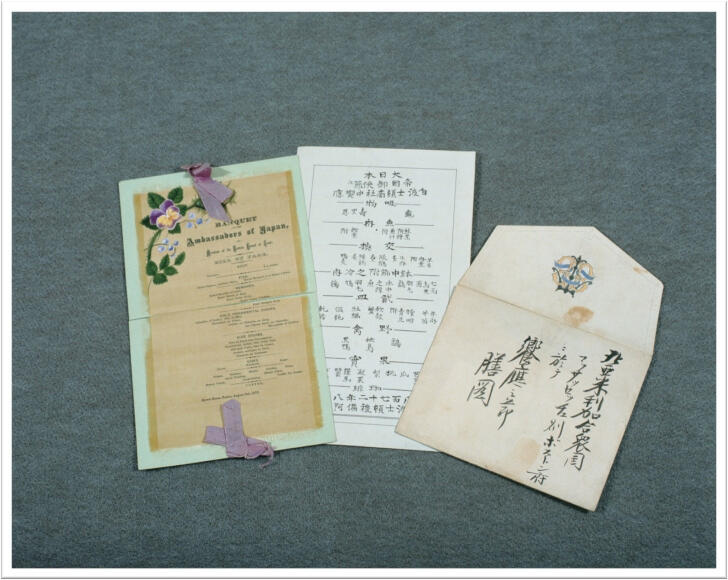
On August 2, 1872, the Japanese embassy arrived at the Revere House Hotel in Bowdoin Square, Boston. The group was greeted with a banquet dinner, hosted by members of the Boston Board of Trade. Menus for the affair were printed stylishly in both Japanese and English. The following day, local newspapers commented on the tasteful decor and elegant food, concluding that the evening was well-suited for the honored delegates from Japan. Full Menu SOUP: Terrapin, à la Julien FISH: Boiled Salmon with Anchovy Sauce,Baked Mackerel, à la Maître d’Hôtel REMOVES: Boiled Shoulder of Lamb,Roast Sirloin of Beef,Roast Green Goose,Roast Young Chicken,Roast Mongrel Duck COLD ORNAMENTAL DISHES: Galantine of Turkey with […]
World’s Peace Jubilee
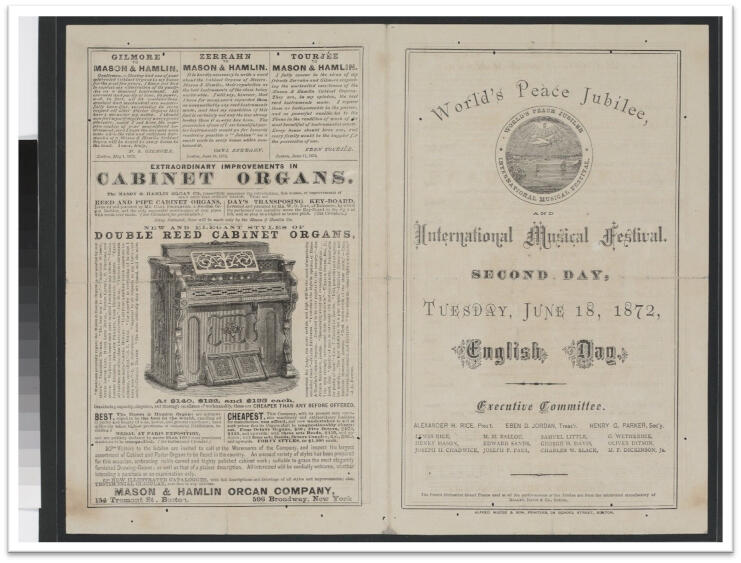
On June 18, 1872, the delegation arrived in Boston and visited the World’s Peace Jubilee and International Music Festival. The momentous summer event was organized to celebrate world peace, following the end of both the American Civil War in 1865 and the Franco-Prussian War in 1871. The music festival included concerts by thousands of musicians and numerous orchestras, bands, and choirs. The performances struck a chord with the delegation, and they were deeply impressed by the profusion of voices that found their way into harmony. Kunitake Kume remarked that there was much to be learned about the artful practice of synchronizing hundreds of voices like instruments. Upon their return to […]
Social Customs
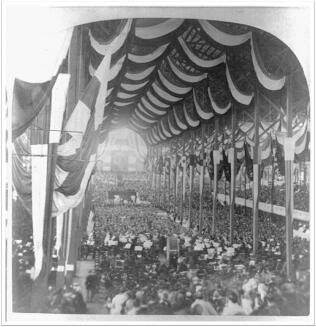
On August 6, 1872, the delegation sailed out of Boston harbor amid cheers and applause from gathered crowds on the shore. The farewell was not the first time the group had been warmly received by the public, and as the boat moved further out to sea Kunitake Kume reflected on the kindness he had experienced throughout their journey. While Kume sometimes didn’t understand the social mannerisms of Americans, such as the rowdy cheering and foot stomping following performances at the Boston International Music Festival, he did believe in the goodwill and amiability of the people. Kume concluded that Japan needed to end its isolation and join what he saw as […]
Marble Architecture
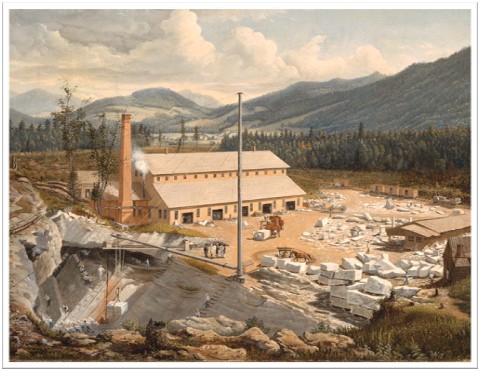
On June 17, 1872, the delegation boarded a train in Saratoga, New York headed towards Boston, Massachusetts. As the landscape passed through the train windows, the delegation could see marble and stone quarries in the near distance. At the time, hydraulic powered mining was a booming industry in Massachusetts, and marble and slate were popular building materials for structures across the country. The delegation was impressed by the look and utility of slate stone, a structural material that was both decorative and protective from wind and water. The Meiji Restoration (1868) marked a turning point in building style in Japan, with many new structures of the 1870’s mimicking Western ideals. […]
Cotton and Wool Mills
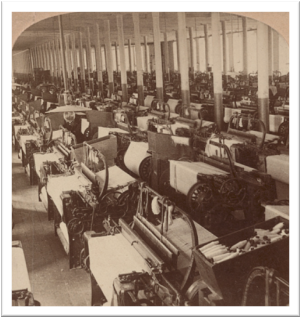
On August 3, 1872 the embassy delegation headed just north of Boston to visit the cotton-milling town of Lawrence, Massachusetts. With three large mills, all powered by the Merrimack River, Lawrence was a small but bustling center for cotton textile production. The mills relied on the popular Jacquard machine, invented by French textile artisan Joseph Marie Jacquard in 1804. The group toured the four-story production buildings, in awe of the lengthy and intricate process required to transform raw cotton into printed cloth. Shortly thereafter, the delegation made a stop in nearby Lowell, Massachusetts to survey wool mills that were also powered by the Merrimack River. The focus in Lowell turned […]
Factories
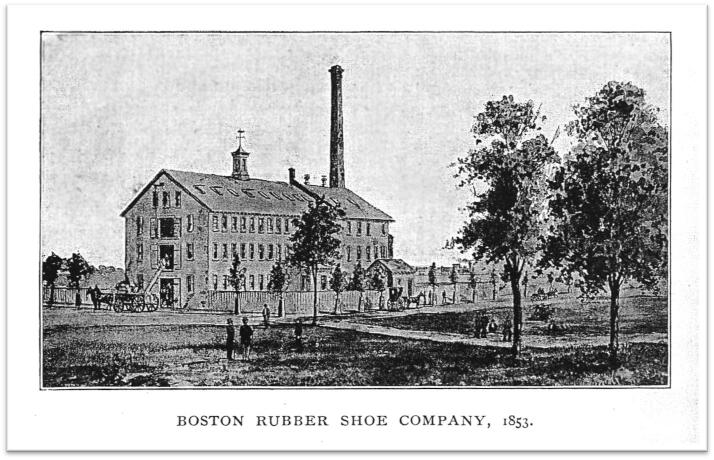
On August 5, 1872, the delegation left the city of Boston to visit factories in nearby towns. From the time of the Meiji Restoration in 1868, Japan had sought to emulate the advancing technology of Western nations. Hoping to get a better understanding of American manufacturing, the delegates divided into two groups in order to visit three factories in one day. The first group, led by Vice-Ambassadors Kido Takayoshi (1833-1877) and Itō Hirobumi (1841-1909), toured a shoe factory and a clothing factory in Hudson, Massachusetts. The second group, led by Vice-Ambassadors Masuka Yamaguchi (1839-1894) and Ōkubo Toshimichi (1830-1878), visited a factory that produced gold and silver utensils in Providence Rhode […]
Federal Arsenal
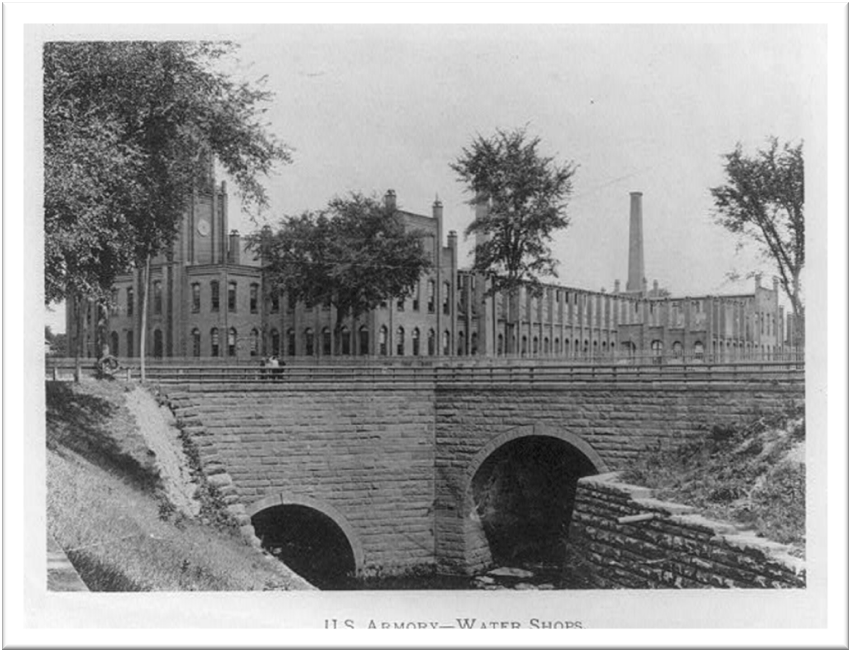
On June 20, 1872, the delegation stopped in Springfield, Massachusetts to visit the Federal Arsenal. Only a few years earlier in Japan, wide-scale domestic conflict and political upheaval had made Western firearms a priority item for import. The delegation was interested in seeing the manufacturing process for small firearms in detail, in hopes of producing rifles domestically in the future. During the time of the Civil War, the Federal Arsenal had produced around 1000 rifles per day, though this number had fallen to 100 per day when the delegation made their visit. The factory in Springfield had installed waterwheels to harness the power of the Connecticut River to run machinery. […]
Independence Hall
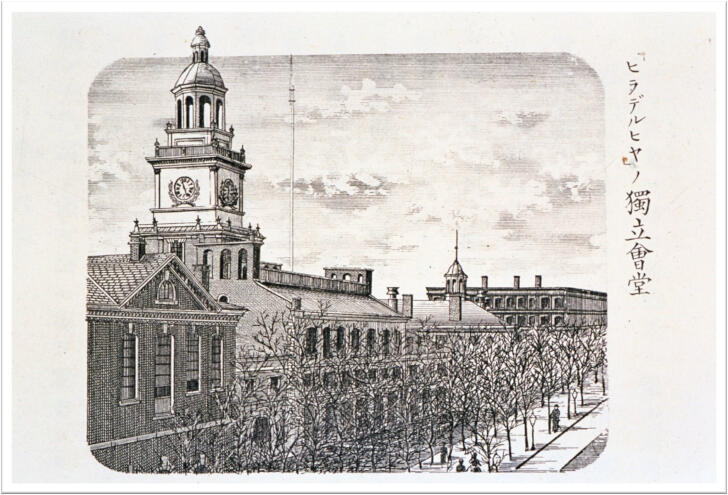
On July 30, 1872, the delegation visited Independence Hall. The building was the site of the first national Congress, and where the Declaration of Independence had been signed nearly one hundred years earlier in 1776. While the Declaration was stored in the building at the time of their visit, the delegates were not allowed to view the hallowed document in person. They did view the Liberty Bell, learn the history of its famous crack, and tour a hall filled with portraits of famous historical figures and presidents.
Philadelphia Libraries
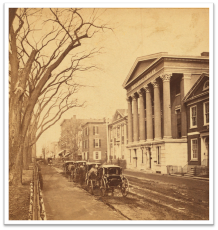
In Philadelphia the delegation was most impressed by the size and variety of libraries spread throughout the city. Founded by Benjamin Franklin in 1731, the public library was a democratic and quintessentially American institution. Kunitake Kume noted that the Philadelphia library, coupled with the Loganian Library, housed 180,000 volumes! The group also learned about the Philadelphia Mercantile Library, a branch that catered their catalog to the city’s merchants and held nearly 30,000 volumes. The delegates carried the importance of libraries back home with them. Japan’s first public library, the Imperial Library, opened in 1872. Twenty years later, the Japan Library Association (JLA) was created to promote nation-wide library services, much […]
Prisons
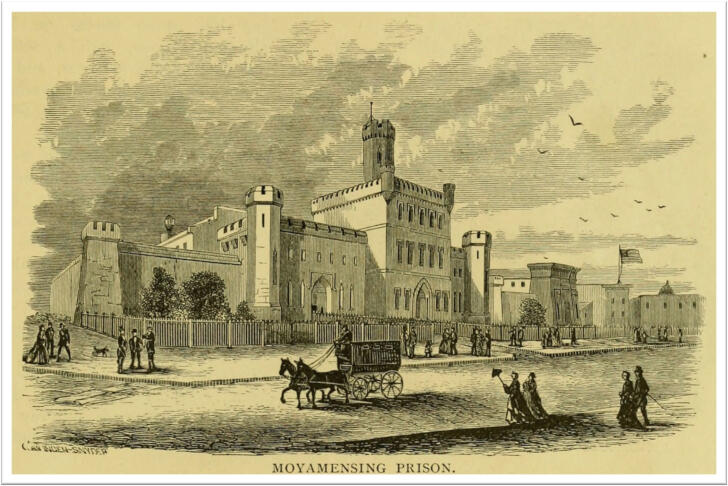
On July 30, 1872, the delegation visited a Philadelphia prison. At the entrance gate houses overlooked large iron doors, and imposing stone walls created the perimeter. The main holding cells were located in a two-story stone building at the center of the prison yard. The delegates saw that the facility was not overly crowded, and inmates were all housed in individual cells measuring roughly six by nine feet. The prisoners spent their days working on many tasks, including creating shoes and weaving straw mats. Upon reflection, once back in Japan, Kunitake Kume noted that the prison systems in Britain, France, and the United States were very similar.
